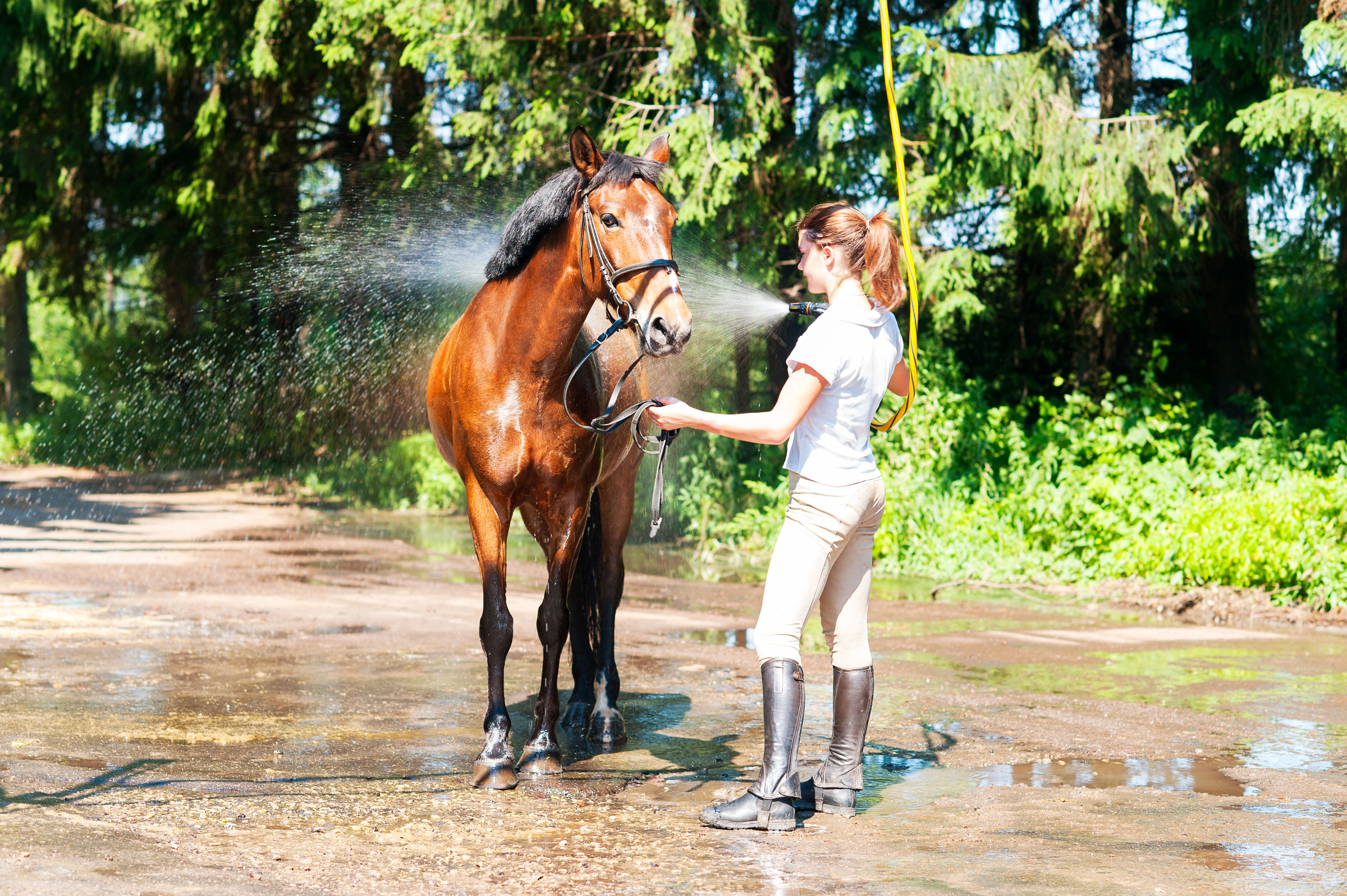
Many horses need assistance with cooling in the summer months. Warm air temperature, especially coupled with high humidity, can prevent a horse from adequately dissipating internal heat from his body while exercising. Heat stress generally develops due to overexertion leading to overheating rather than to external heating by the sun’s rays.
There are a variety of simple cooling strategies you can use. Don’t forget to monitor how well your horse is doing by intermittently measuring vital signs and heart rate recovery.
As you finish your workout, slow your horse to a walk for 5-10 minutes. Hop off, remove the saddle and keep walking so blood flow continues to flush metabolic waste products and heat from his muscles. Bringing your horse to a sudden and complete standstill after moderate to strenuous exercise causes blood to pool in the muscles. This compromises the circulating blood volume, contributing to relative dehydration while being counterproductive to cooling.
Copiously bathe his head, neck, armpits and legs with cool water. Large blood vessels in these locations flush heat to the skin surface, and repeated soaking facilitates evaporative cooling. You can sponge and soak while walking him and when finally stopped.
Continuously apply and scrape water away until the horse’s skin feels cool to touch. Don’t be tempted to drape wet towels over the head and neck and leave them in place. Towels act as an insulator, thereby limiting cooling.
Heat normally radiates from the head to keep the brain cooler than the inner core temperature of the body; increase in heat to the brain contributes to central or mental fatigue. Bathe the head as well as large blood vessels of the neck (jugular veins and carotid arteries) and legs to facilitate movement of heat out of the central body core.
Cooling a horse down too rapidly can cause chilling or muscle cramps (tying-up, myositis). In hot and humid climates, ice water can be applied to the entire body with less risk of muscle cramping. However, ice water baths in more arid climates can cause problems in large muscle groups – blood vessels constrict away from the surface while retaining metabolic by‑products and heat that need to be carried out from muscle depths. Besides exhibiting poor metabolic recoveries, the horse might develop “tying up” syndrome with painful muscle spasms. In arid climates, it is best to constrain cooling baths only to areas in front of the withers.
Monitor rectal temperature and muscle tone as you cool out your horse. Once rectal temperature reaches 101 degrees Fahrenheit and/or the chest feels cool to touch, you can stop cooling assistance.
Offer drinking water following exercise. For horses that have been exercised at gallops or sprints, initially only offer small, frequent drinks. In contrast, horses working at steady aerobic paces can drink what they want.
Shade is important to improve comfort and cooling. Find an area with good air circulation, preferably with a light breeze. Fans are helpful for convective cooling – air flowing across the horse’s body pulls heat from the skin. Periodic, short walks help muscles pump heat away from deeper tissues.
If your horse isn’t cooling down appropriately within 10-15 minutes, contact a veterinarian immediately.


